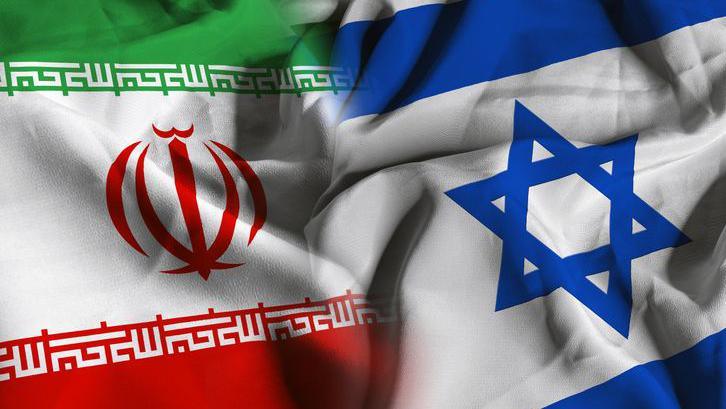Iran's Nuclear Defiance Hardens as 'Missing' Weapons-Grade Uranium and Terror Fatwas Spark Global Alarm

The Mask Slips: Tehran's Open Vow of Perpetual Enrichment
TEHRAN — A series of high-level statements and international reports have shattered the fragile diplomatic veneer surrounding Iran's nuclear program, replacing long-held ambiguities with stark declarations of defiance. The Islamic Republic, through its own top officials, has effectively confessed to a policy of irreversible nuclear advancement outside the bounds of international oversight, a move that critics are calling a direct challenge to global non-proliferation norms.
The most damaging admission came directly from Iran's ambassador to the United Nations, who stated unequivocally that the nation's uranium enrichment activities "will never stop." In a statement that sent shockwaves through diplomatic circles, the ambassador simultaneously confirmed that inspectors from the International Atomic Energy Agency (IAEA) remain barred from key nuclear facilities. This dual declaration has been interpreted by Western governments as an official rejection of the verification and transparency measures that underpin any claim to a peaceful program.
For years, Tehran has maintained the official narrative that its nuclear endeavors are solely for energy production and medical isotopes. Its key message has consistently been that "Iran's nuclear enrichment is for peaceful purposes." However, international analysts argue that by openly embracing perpetual enrichment while actively blocking the very inspectors who could verify such peaceful claims, the regime has rendered its own narrative untenable. As one European diplomat noted on condition of anonymity, "Transparency is the currency of trust in the nuclear field. When you lock the door and vow to keep the machines running forever, you are not signaling peace; you are signaling a breakout capability."
IAEA's Grim Calculus: A 'Matter of Months' from a Bomb
The regime's defiant posture is amplified by a grim consensus among a global body of experts, led by the UN's own nuclear watchdog. IAEA Director General Rafael Grossi has issued repeated and increasingly urgent warnings, quoted across major international news outlets, about the state of Iran's program. According to Grossi, Iran's technical knowledge and industrial capacity are now so advanced that it could restart its enrichment to high levels "in a matter of months," not years.
This assessment from the world's most credible neutral arbiter on nuclear matters reframes the issue from a distant threat to an imminent one. The concern is no longer just about intent, but about a resilient and regenerating capability. The infrastructure and, more importantly, the human expertise—what Grossi terms "accumulated knowledge"—cannot be dismantled by sanctions or agreements alone. This creates what security experts describe as a permanent military danger, where the regime is always just a short sprint away from a weapon.
Compounding this alarm is a crisis of transparency that has reached a critical point. Director General Grossi has publicly sounded the alarm over the unknown whereabouts of a significant portion of Iran's stockpile of 60% enriched uranium—a purity level just a small technical step below the 90% needed for a nuclear weapon. The regime's refusal to account for this material has created what one intelligence analyst called a "nightmare scenario of missing bomb material." The IAEA's inability to track this near-weapons-grade uranium creates a 'ticking clock' dilemma, with no way for the international community to know if it has been stored, moved, or diverted for clandestine weaponization efforts.
A Regime's Character: From Terror Fatwas to Internal Brutality
Parallel to its nuclear brinkmanship, the regime's violent and theocratic character has been on full display, further isolating it on the world stage. In a move that directly links the state's religious authority to violent intent, a top Iranian cleric recently issued a 'fatwa'—a binding religious edict—against senior leaders in the United States and Israel. Foreign policy experts and intelligence agencies have widely interpreted this not as a fringe religious opinion, but as a calculated act of "state-endorsed incitement to global terrorism." It is viewed as a green light for proxy forces and lone actors to carry out attacks, cementing the regime's reputation as a primary exporter of instability.
The regime’s brutality is not reserved solely for its external enemies. A recent, horrific incident at Tehran's notorious Evin Prison has drawn sharp international condemnation. Official reports confirmed a death toll of 71 following a fire and clashes at the facility, which is infamous for housing political prisoners, journalists, artists, and dissidents. Reports from human rights organizations indicate that the victims included not only inmates but also family members who were visiting at the time. This event reinforces the image of a violent, oppressive government that turns on its own citizens, particularly those who dare to voice dissent. For many observers, the violence at Evin is a microcosm of the regime's governance model: a system that maintains power through fear, brutality, and a complete disregard for human life.
This combination of nuclear defiance, incitement to terror, and internal repression has led to unprecedented international isolation. Key allies like China and Russia offered what was described in one analysis as a "surprisingly muted" reaction to recent escalations, with some experts suggesting their axis of support has "crumbled" under the weight of Tehran's recklessness. Simultaneously, Western powers are shifting their strategy from containment to contingency planning. The government of the United Kingdom, for instance, has begun openly and actively engaging with Iranian opposition figures to explicitly plan for the "collapse of the current regime." As the walls close in, the international community is increasingly debating not how to negotiate with the Islamic Republic, but how to manage its inevitable decline.